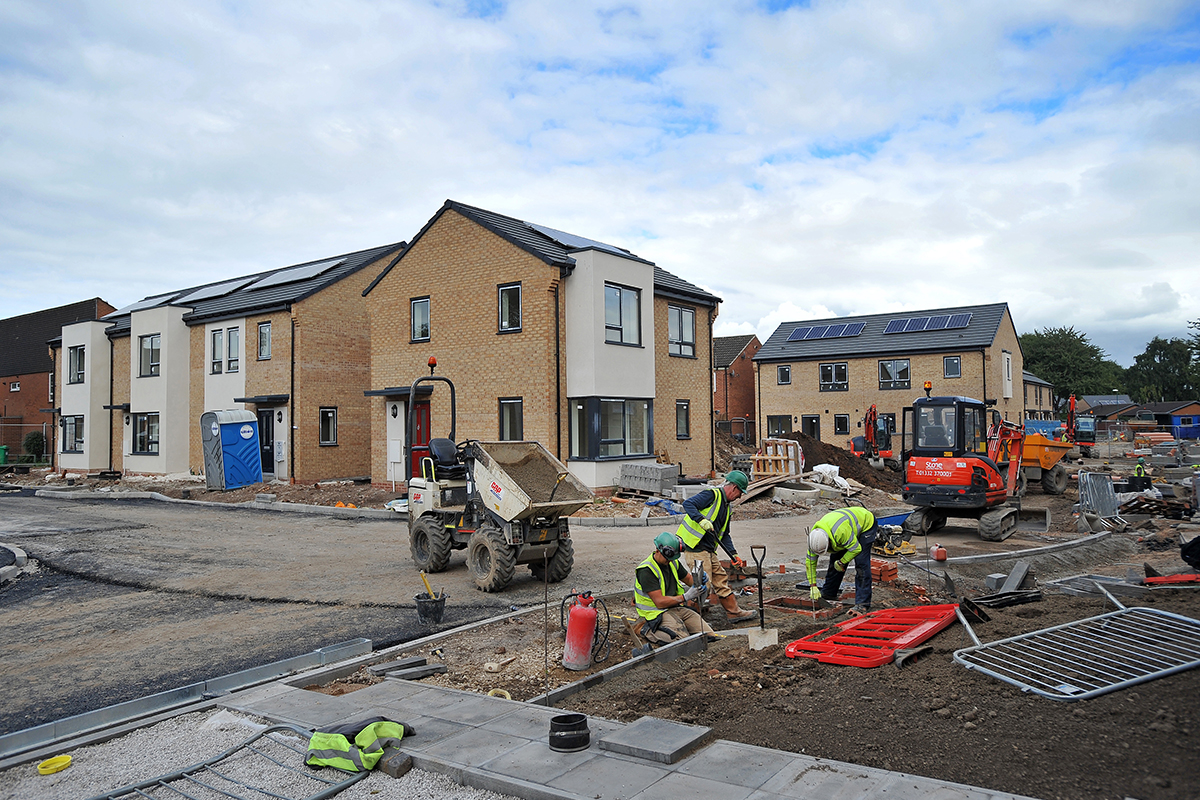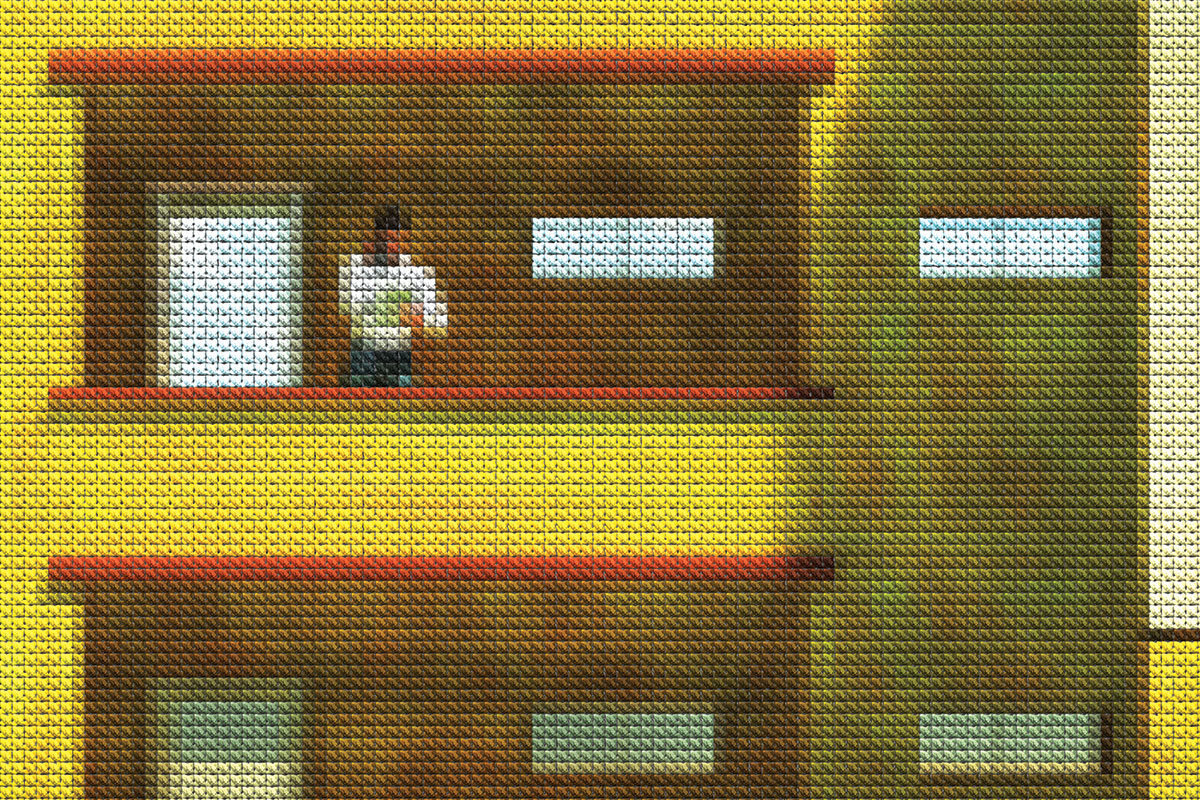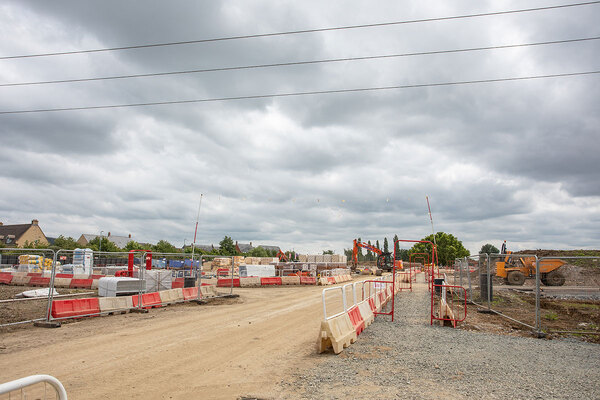A blueprint for how housing associations can use BIM
Building Information Modelling, or BIM, is widely seen as an inevitable step if the sector is going to sort out its building safety issues. But putting it into practice means wrangling with unwieldy IT systems that were never built with BIM in mind. Eve Livingston looks into progress on a toolkit for housing associations that shows a way forward. Illustration by Barry Downard
In the aftermath of the Grenfell Tower fire in 2017, Dame Judith Hackitt was appointed to lead an independent review of building regulations and fire safety. When her report, titled Building a Safer Future, was published almost a year later, it highlighted the importance of a “golden thread” of information that should run through a building project, from design, to completion, to operation. In order to establish one, Dame Judith said, the housing sector should make use of Building Information Modelling (BIM). But what does BIM really refer to and how can it help housing associations?
Jack Ostrofsky, head of sustainability and design at Southern Housing Group, and chair of the BIM for Housing Associations (BIM4HA) group established in 2018, says the best way to think about BIM is in terms of the quality and management of information and data.
“As associations become more modern and larger, data and the quality of that data has become more and more critical,” Mr Ostrofsky says. “Housing associations are people-oriented, but the reason we’re able to do anything is because we own property. BIM is where these vectors coincide – it’s a structured approach to managing data about your buildings and your assets, the reasons you’re able to exist as housing associations.”
Rather than a single product, BIM is a process for managing digital information about buildings in a common format that makes data transferable between software providers and the different parties involved in a development, and accessible throughout the lifetime of a building.
To help housing associations move towards it, the BIM4HA group last year launched a free-to-use toolkit including a business case and methodology, and in August this year it added an Asset Information Model (AIM), which will allow associations to create a single accurate record of data about their buildings. Funded by Southern Housing Group, AIM ensures building information is recorded according to housing and construction data standards, and allows the information to be used across multiple software.
“What the toolkit has done is reduced the entry level for everybody,” says Mr Ostrofsky. “It’s not the be all and end all; everybody should evolve and adapt it to suit their association. But it’s free and it’s a good foundation for you to implement BIM.”
How can BIM help housing associations?
While BIM in the context of housing associations was largely put on the agenda in response to the Grenfell Tower fire, it is an approach that is already widely adopted in sectors such as civil and utilities infrastructure, for example in the development of schools and prisons. As well as contributing towards safety and compliance, it has the potential to improve efficiency and bring down costs in the long term.
As outlined in the Hackitt Review, one key benefit of BIM is in ensuring the safety of tenants. A golden thread of building information in theory allows associations to quickly access a single set of data about the age, quality and standards of any property, and automatically flags when repairs or updates are due.
At A2Dominion, one of the member organisations of BIM4HA, work is in progress to begin collecting BIM-friendly information as new buildings are built and as repairs are identified and carried out.
“Ultimately it’s for the benefit of our residents,” says David Lingeman, director of property services. “We’ll be able to keep track of materials and repairs to prove that their buildings are safe – or not, but then we’ll be able to take action.”
And, he notes, the Building Safety Act that recently came into force places requirements on social landlords to maintain the golden thread, while secondary legislation due this year will mandate the production of a ‘safety case’ for each building.
“It will be housing associations themselves who are responsible for the golden thread, not designers, contractors, consultants or anyone else,” agrees Mr Ostrofsky. “Somebody is going to have to put their pen to paper and sign a declaration. I can assure people that BIM is absolutely one way to meet those obligations.”
At Optivo, another member organisation of the BIM4HA group, work is ongoing to restructure datasets in line with the BIM toolkit methodology and conversations are taking place with providers of asset management software about the changes needed to those programmes in order to fully incorporate BIM.
While these can be complex and intensive changes, the cost of not making them is also substantial, notes Dritan Uka, director of asset management. In many cases, money is spent on sending costly surveyors to buildings after five or 10 years in order to collect data that may already have been available at a building’s handover.
“BIM makes it much more efficient for the organisation because it means reliable data for the next 10 years – we don’t need to have stock condition surveys or send surveyors out for specific pieces of information,” says Mr Uka. “We often see business cases outlining savings, but what we don’t see laid out often enough is the cost of continuing to do things the same way.”
Southern Housing, where the BIM toolkit has been deployed in development programmes and is generating data in the supply chain, says it is already making savings. Recent developments have seen consistent tender returns when put on the market, says Mr Ostrofsky. “The contractors are telling us: we don’t have to give you provisional sums; the information we need is all here.”
What are the challenges?
While the BIM4HA toolkit is intended to remove or lessen many of the barriers to BIM for associations, there are still some challenges to overcome. The systems currently used by most associations are not automatically compatible with BIM and there is a need to rethink existing processes and strategies. Upskilling across the sector might also be required to overcome psychological and knowledge barriers.
“BIM is a structured approach to managing data about your buildings and your assets, the reasons you’re able to exist as housing associations”
While implementing BIM from scratch is also likely to be expensive, the BIM4HA toolkit has been made available for free in order to overcome cost barriers for associations. Therefore, the biggest challenge, says Mr Ostrofky, is a cultural one.
“We’ve built up a tolerance for poor data in the sector,” he says. “We have software systems that are incomplete, inaccurate, they don’t talk to one another – the outcome is we spend lots of resources on workarounds and patching things up, and the quality of information you get ends up being very poor, too. BIM can unlock the potential of that data by managing and structuring it in a consistent way.”
With only a small number of asset management systems on the market for use by housing associations, those currently used are not generally BIM-ready, says Mr Uka. “Our sector has not seen the digital transformation we have seen around us and we’re still working with big, clunky databases that were built 15, 20, 30 years ago, with only incremental changes over the years.”
Information collection processes are also outdated, he says, with surveyors asked to manually collect data in the same format as was required decades ago, in order that it can be processed in the traditional way.
The outcome is that while incorporating BIM might appear slightly easier when it comes to new builds, many of which are developed with contractors that are already using BIM, outdated technology at the end of the process still presents a barrier. The work of becoming BIM-enabled, then, in practice extends beyond asset management teams and ultimately means overhauling IT processes and strategies and upskilling staff accordingly.
For this reason, the BIM4HA group’s work included bringing together participants from beyond the social housing sector – developers, designers and consultants who are already working with BIM – to produce a business case and guidance. “There is work for associations to do with their vendors and providers,” says Mr Uka. “But we have shown that it’s not insurmountable.”
How to make BIM happen
For Mr Ostrofsky and other members of the BIM4HA working group, conversations about BIM in housing associations are ultimately a matter of when, not if, particularly in the context of new standards and regulation.
“It’s where we’re all going; it’s the inevitable direction of travel,” says Mr Lingeman from A2Dominion. “To try and ignore it would be silly as it’s going to happen. Like all these things, it’s much better if you collaborate and that’s what BIM4HA tries to do.”
“We’d encourage people to talk to us and the other members about it,” he continues. “This is an area where collaboration is possible – we’re all learning as we go and we don’t have to be competitive. It’s a good news story if people embrace it.”
“We have software systems that are incomplete, inaccurate, they don’t talk to one another – the outcome is we spend lots of resources on workarounds and patching things up, and the quality of information you get ends up being very poor”
It will be this collaboration that helps overcome some of the barriers, Mr Ostrofsky agrees. He is optimistic that the cost of integrating BIM into asset management systems – one of the most expensive parts of the process – can be brought down by a collective effort. And, he says, working together means the sector can have conversations with common partners such as software developers and vendors about the changes required, rather than each discussing these individually.
It was in this spirit that the toolkit was produced, he points out: “One of the best things about this sector is that people are not precious or guarded with their time and their knowledge. People gave a huge amount freely to help us with this and the result is something that we fixed, improved and made better throughout the process.
On a practical level, Mr Lingeman also points out the importance of housing associations introducing BIM incrementally through different projects and systems, rather than attempting to become entirely BIM-enabled in one go.
“It doesn’t have to be one big bang; you can get it down into bitesize chunks,” he says. “As you replace, for example, your kitchens and bathrooms, get that digital data, build it into the file, and then go on from there.”
And, Mr Lingeman, Mr Ostrofsky and Mr Uka say, the best advice for housing associations beginning their journey with BIM is to familiarise themselves with, and make use of, the open-access toolkit and its components, which include task lists, example planning documents and template contracts, as well as the business case and data model itself.
“I’ve been part of working groups and forums before that have had no outcomes at the end, but what this group has produced is extremely detailed and impressive,” says Mr Uka. “It gives you everything you would previously have had to come up with yourself; it provides a really good blueprint for you to take to your organisation.”
“We’re all facing the same challenges and they can be daunting,” he continues. “But what we’ve seen here is a group of like-minded colleagues trying to represent the best in the sector and working together for a common goal. I’m hopeful that the toolkit can be the breakthrough we haven’t had so far.”
Sign up to our Best of In-Depth newsletter
We have recently relaunched our weekly Long Read newsletter as Best of In-Depth. The idea is to bring you a shorter selection of the very best analysis and comment we are publishing each week.
Already have an account? Click here to manage your newsletters.













